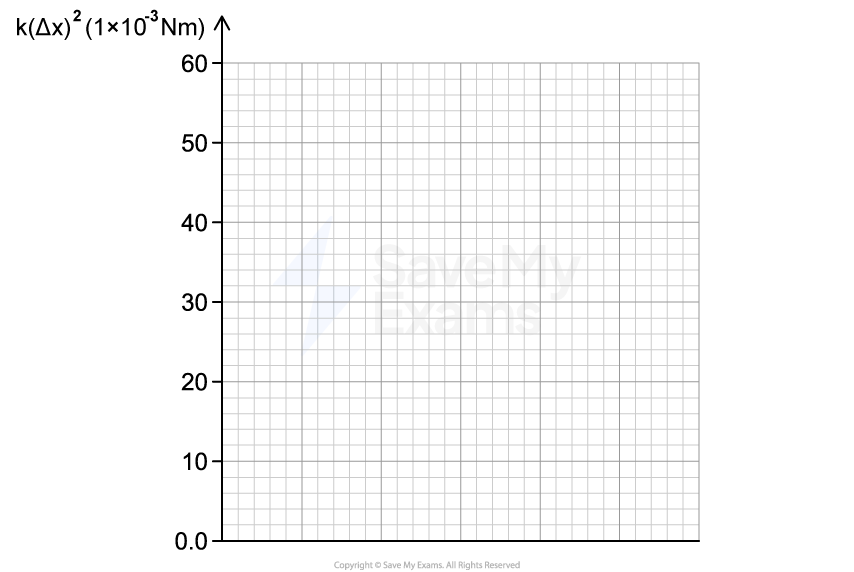
Figure 1
A group of students are given a projectile launcher which consists of a spring with an attached plate, as shown in Figure 1. When the spring is compressed, the plate can be held in place by a pin at any of three positions A, B, or C.

Figure 2
Figure 2 shows a steel sphere placed against the plate, which is held in place by a pin at position C. The sphere is launched upon release of the pin.
The students have access to the projectile launcher and equipment usually found in a school laboratory.
The students are asked to take measurements to create a graph that could be used to determine the spring constant of the spring.
Describe an experimental procedure the students could use to collect the data needed to determine the spring constant of the spring. Include any steps necessary to reduce experimental uncertainty. If needed, you may include a simple diagram of the setup with your procedure.
Describe how the data collected in part a) could be plotted to create a linear graph, and how that graph would be analyzed to determine the spring constant of the spring.
The students perform another experiment using the projectile launcher, where they measure the range of spheres of different masses and their time of flight. The spring constant of the spring is . The following table shows the horizontal range
of each sphere and its time of flight
. The students create a graph with
plotted on the vertical axis.
Compression distance (m) | Time of flight (s) | Range (m) | ||
|---|---|---|---|---|
(A) 0.02 | 1.02 | 0.108 | ||
(B) 0.04 | 0.98 | 0.215 | ||
(C) 0.06 | 1.05 | 0.343 |
Table 1
Indicate which measured or calculated quantity could be plotted on the horizontal axis to yield a linear graph whose slope can be used to calculate an experimental value for the mass of the new sphere. You may use the remaining columns in the table above, as needed, to record any quantities (including units) that are not already in the table.
Vertical axis =
Horizontal axis = ........
i) On the grid in Figure 3, plot the appropriate quantities to determine the mass of the sphere. Clearly scale and label all axes, including units, as appropriate.

Figure 3
ii) Draw a best fit line to the data graphed in part i).
Calculate an experimental value for the mass of the ball bearing using the best-fit line that you drew in Figure 3 in part ii).
Did this page help you?









